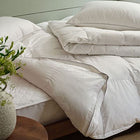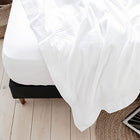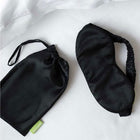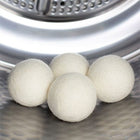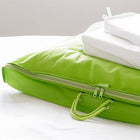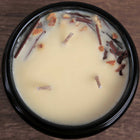
How often should you change your pillows?
Many sleep experts recommend replacing a pillow every one to two years. Why?
The key purpose of your pillow is to support your head and neck while you sleep, so that you don’t wake up with neck pain or stiffness. Pillows, like mattresses, deflate and lose their ability to be supportive over time. Different fillings do have different durability, natural down and feather pillows last longer than polyester filled pillows for example. Eventually though, all pillows will lose their shape and need to be replaced.
How often should you change your pillows?
- Time to change your pillow checklist
- Washing your pillows
- Pillow allergy research
- Recycling or repurposing your pillow
Is it time to change your pillow checklist
If you answer yes to any of these questions, then it's time to treat yourself to a lovely new pillow:
- Down & feather pillows - Do you have to constantly fluff it up so that it supports your head?
- Foam & synthetic pillows - Has the filling gone lumpy and clumpy?
- Do you wake up with neck pain or stiffness?
- Has your pillow gone flat?
- Does your pillow still feel that it supports your head and neck?
- If you fold your pillow in half does it stay folded?
"If you have a plain-old, inexpensive polyester pillow, you should be replacing it every six months,” says Michael Breus, Ph.D., a clinical psychologist and author of the book Good Night. “But if you have a quality pillow or any one with structural integrity, it’ll last you anywhere from 18 to 36 months.”
See our guide to Best pillow for neck pain.
Washing your pillows
Check the care label on your pillow for washing instructions. Most pillows should be washed every 6 to 12 months.
- Pillows absorb body oils, dead skin cells and can attract dust mites (yuck!)
- Regular washing every six months can extend your pillow's lifespan.
- Foam pillows can’t be washed however.
- Also, bear in mind that when you wash microfibre and hollowfibre pillows they can shed microfibres and add to microplastic pollution.
See our Guide to washing your pillow.
Pillow allergy research
It's important to keep your pillow clean and to replace it regularly if you have a dust-mite allergy or a respiratory illness such as asthma or sinusitis.
An allergy study by researchers from The University of Manchester funded by the Fungal Research Trust took samples from pillows that had been used for between 1 and a half to 20 years. The researchers took apart various feather and synthetic pillows. They identified several thousand spores of fungus per gram of used pillow; over a million spores per pillow.
Each pillow was found to contain a substantial fungal load, with 4 to 16 different species identified per sample. Even higher numbers were found in synthetic pillows. The microscopic fungus aspergillus fumigatus was particularly evident in synthetic pillows and fungi as diverse as bread and vine moulds and those usually found on damp walls and in showers were also found.
Professor Ashley Woodcock added: "Since people spend a third of their life sleeping and breathing close to a potentially large and varied source of fungi, these findings certainly have important implications for people with respiratory disease - especially asthma and sinusitis."
Recycling or repurposing your pillows
- Pillows aren’t really recyclable but instead of throwing your old pillows away, think about donating them to an animal shelter. Unless you have a pet of your own who would love a new bed!
- Natural fibre pillows such as feather, down and wool are biodegradable. So you can put the feather, down or wool filling out for nesting birds in the Spring.
- Microfibre and hollowfibre pillows contain plastic microfibres so don't put the filling out for the birds! If you don't want to add to land fill, think about using your old pillow as extra insulation in the loft or perhaps as a draft excluder.
